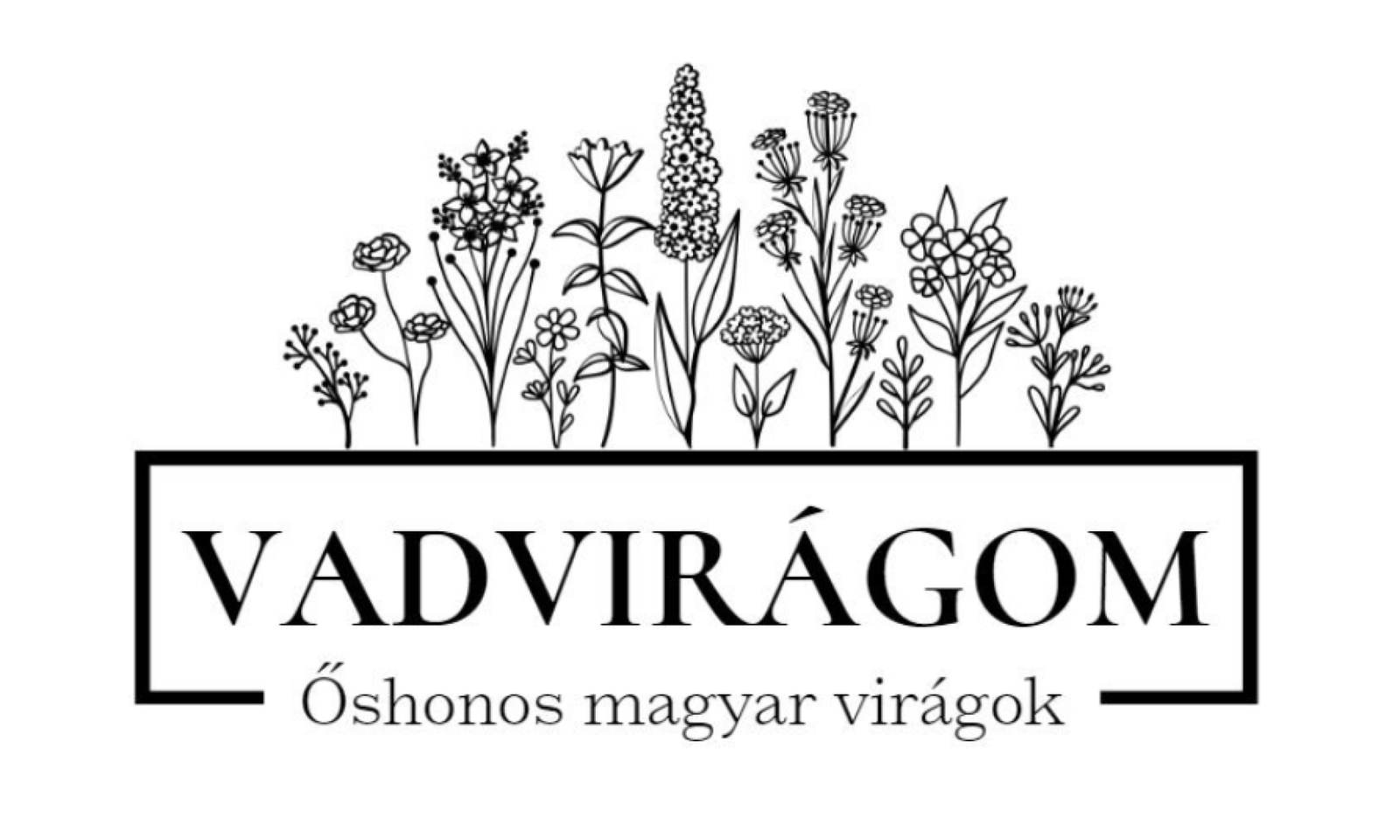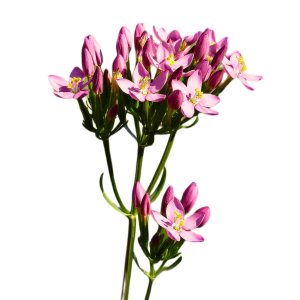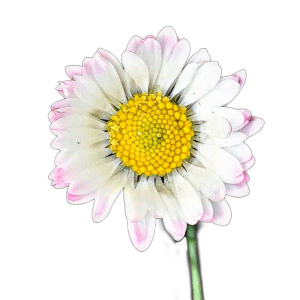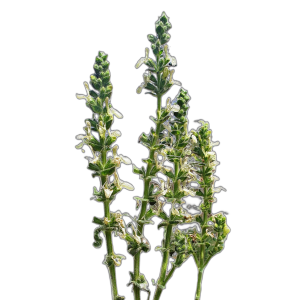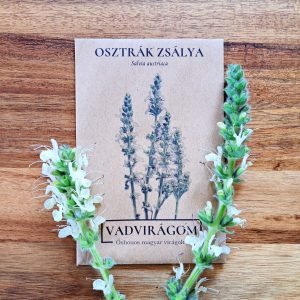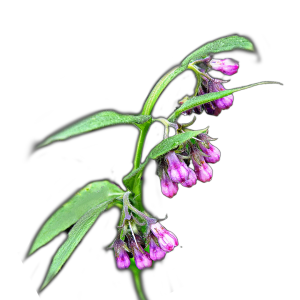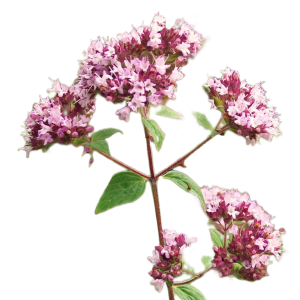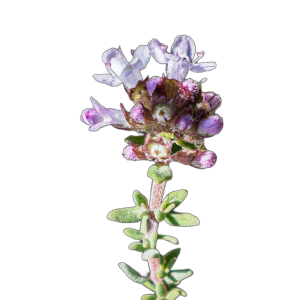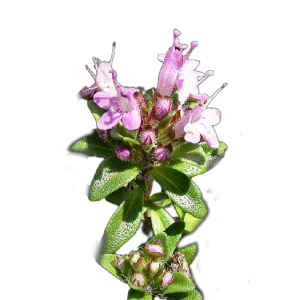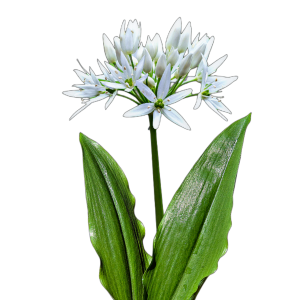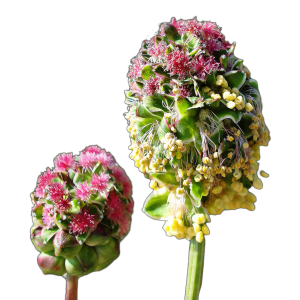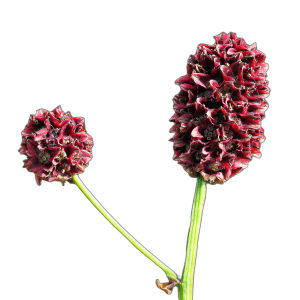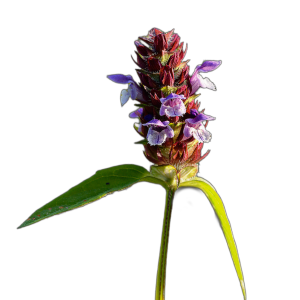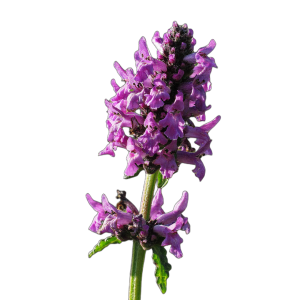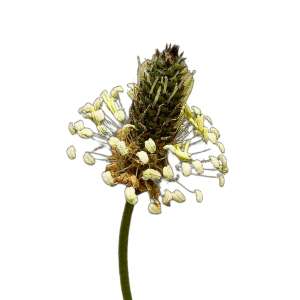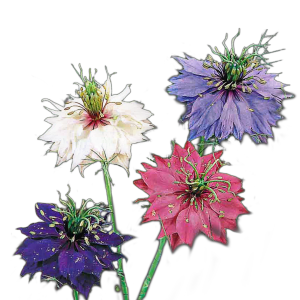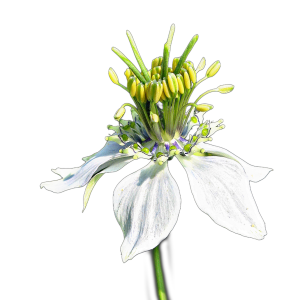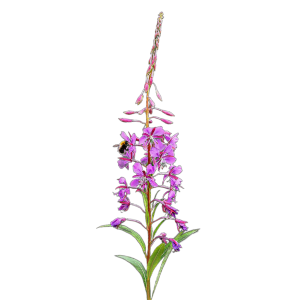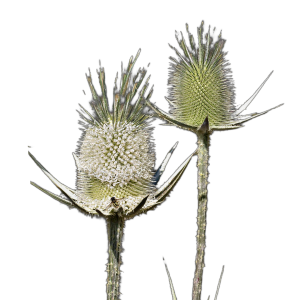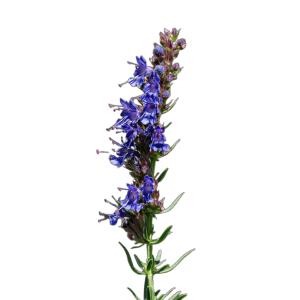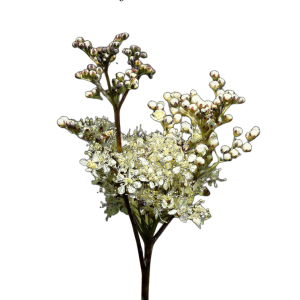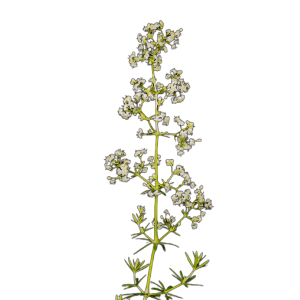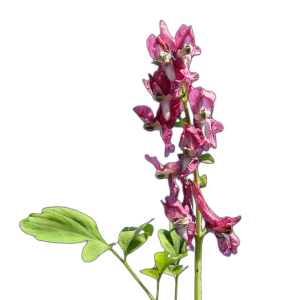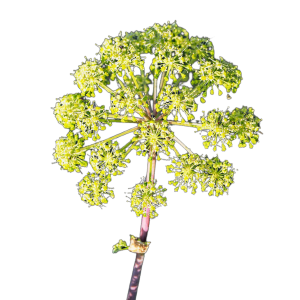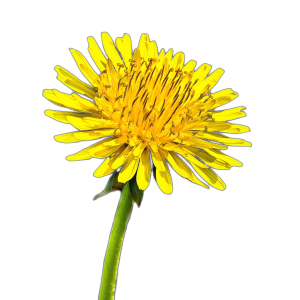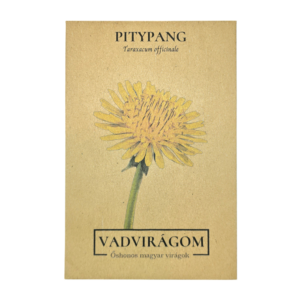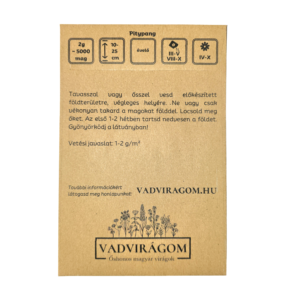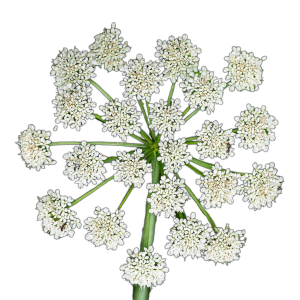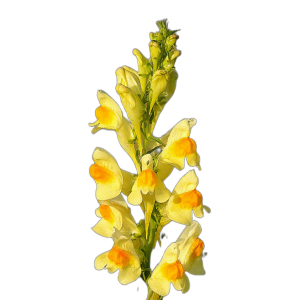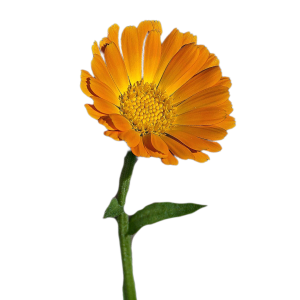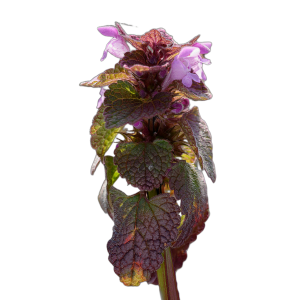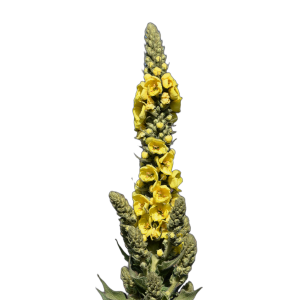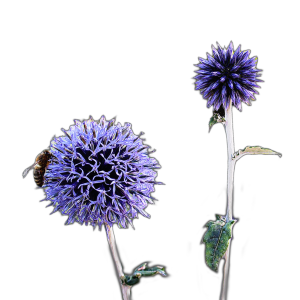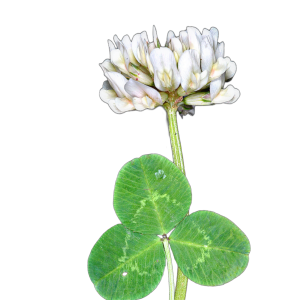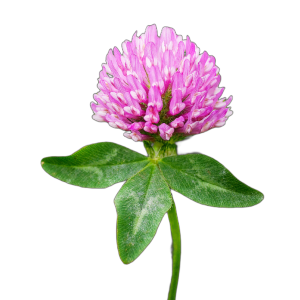“Közönséges orbáncfű (Hypericum perforatum) 1g, ~10500 mag” a kosárba helyezve. Kosár
-
-
Add to basket
- Add to wishlistAdd to wishlist
- annual, herb, beekeeper, native
Chamomile (Matricaria chamomilla) 1g, ~12000 seeds
- 875 Ft
- Chamomile, also known as medicinal chamomile, is our best-known and most versatile herb. It can be made into a tea for colds, used as a poultice for inflamed eyes, and as an antiseptic and anti-inflammatory. It is a common ingredient in cosmetics, soaps and shower gels. Its tea has a calming effect and helps you fall asleep. In England, it is also used as an ingredient in craft beers, where not only the flower but the whole plant is added to the beer. As an annual flower, it quickly adds a lovely splash of colour to your garden. When harvested, it...
Add to wishlistAdd to wishlist -
Add to basket
-
-
Add to basket
- Add to wishlistAdd to wishlist
- perennial, herb, bee-keeper, native
Centaurium erythrea 0,01g, ~990 seeds
- 875 Ft
- Centaurium erythrea is one of our most beautiful wild flowers. Its pink, star-shaped flowers, arranged in umbels, only open in sunshine. Its medicinal properties have been known since antiquity, and its active ingredients stimulate digestion and bile flow. The latter, together with its bitter taste, makes it an indispensable ingredient in stomachic dishes. Its extraction is not easy, it is recommended only for seed-sowing ninjas and requires patience and luck. Properties: other names: centaurea, gentian, sturgeon's weed, centaurea,...
Add to wishlistAdd to wishlist -
Add to basket
-
-
Add to basket
- Add to wishlistAdd to wishlist
- perennial, herb, bee-keeper, native
Daisy (Bellis perennis) 0,25g, ~1800 seeds
- 875 Ft
- I think no one needs to be introduced to my favourite creator of flower lawns. The wild form of the daisy (Bellis perennis) is our native wildflower, which does very well in grass and lawns. It is best sown with grass or in seed mixtures when mowing, but do not sow it amongst your existing grass: it is best sown as seedlings, which will germinate very well over time when planted amongst the grass. Its attractiveness as a pollinator is incredible...
Add to wishlistAdd to wishlist -
Add to basket
-
-
Add to basket
- Add to wishlistAdd to wishlist
- perennial, herb, bee-keeper, native
Austrian Sage (Salvia austriaca) 1g, ~500 seeds
- 875 Ft
- The Austrian sage (Salvia austriaca) is a beautiful native wildflower, unknown to many, that really should be in our gardens. Like the Hungarian sage, it is white in colour, but less branched and taller than the Lignet sage. Like all sages, it is one of our most attractive wild flowers and a great favourite with pollinators, especially bumblebees. Many of our wild flowers were first described by a Franco-Austrian botanist N.J.Jacquin,...
Add to wishlistAdd to wishlist -
Add to basket
-
-
Add to basket
- Add to wishlistAdd to wishlist
- perennial, herb, bee-keeper, native
Black Coneflower (Symphytum officinale) 0,5g, ~50 seeds
- 875 Ft
- The black needlewort (Symphytum officinale) is a very well-known native herb, mostly used externally as an ointment for broken bones, sprains, bruises, sprains and similar conditions. The root and leaves are collected and used to make ointments, tinctures and poultices. Its use internally is not recommended because of its alcohol content of pyrrolizidine, which is harmful to the liver. Like other borage species, such as medical atracil, teriy...
Add to wishlistAdd to wishlist -
Add to basket
-
-
Add to basket
- Add to wishlistAdd to wishlist
- perennial, herb, bee-keeper, native
Daisy (Leucanthemum vulgare) 1g, ~3000 seeds
- 875 Ft
- Most of us know the meadow daisy (Leucanthemum vulgare) or wild daisy from the like-it-or-not game of petal-peeling. The wild variety is perennial and winter-hardy, if left undisturbed it will also sow its seeds beautifully and can form larger colonies. Its long bloom makes it a valuable flower for pollinators but it is also beautiful. Properties.
Add to wishlistAdd to wishlist -
Add to basket
-
-
Add to basket
- Add to wishlistAdd to wishlist
- 10/10 pollinating factor, perennial, herb, medicinal plant, butterfly favourite, bee-feeder, native
Oregano (Origanum vulgare) 1g, ~12000 seeds
- 875 Ft
- Oregano (Origanum vulgare) is a wild Hungarian variety of the spice known as pitch grass, which is most commonly known as pitch grass or wild marjoram. It has a less intense flavour than the Mediterranean variety used in Bolognese sauce, but it can be used as a spice and herb. It's also one of our most attractive wild flowers for pollinators, visited by a cavalcade of solitary bees, bumblebees and butterflies for nectar. Properties.
Add to wishlistAdd to wishlist -
Add to basket
-
-
Add to basket
- Add to wishlistAdd to wishlist
- also for window box, edible flower, perennial, herb, herbaceous plant, beekeeper, native, tea
Garden Thyme (Thymus vulgaris) 1g, ~4700 seeds
- 875 Ft
- Garden thyme (Thymus vulgaris) is an herb of Mediterranean origin, related to the narrow-leaved thyme that is also native to our country. Its long flowering period (June to September) also makes it a very good pollinator and it is visibly adored and frequented by bees and butterflies. As a herb, garden thyme is the most commonly used, mostly used to flavour meats, but it also goes very well with game. It is also used as a medicinal herb, expectorant, antispasmodic...
Add to wishlistAdd to wishlist -
Add to basket
-
- Out of StockRead more
- Add to wishlistAdd to wishlist
- also for window box, edible flower, perennial, herb, herbaceous plant, beekeeper, native, tea
Thymus serpyllum 0,25g, ~1950 seeds
- 875 Ft
- Narrow-leaved thyme or field thyme (Thymus serpyllum) is a native Hungarian herb that can be found in many places in nature. Its long flowering period (from May to September) makes it a very good pollinator and it is visibly adored and frequently visited by bees and butterflies. It is also increasingly being used abroad as a flowering, care-free weed. Its short stature, beautiful flowers and drought tolerance make it a really good substitute for lawns....
Add to wishlistAdd to wishlist -
-
-
Add to basket
- Add to wishlistAdd to wishlist
- also for window box, edible flower, perennial, herb, medicinal plant, bee-keeper, native
Allium ursinum 1g, ~130 seeds
- 875 Ft
- Allium ursinum (Allium ursinum) is one of our best-known native herbs and is justifiably popular. Like snake garlic, it is also known as wild garlic. A gift from the shady forests of spring, its mildly garlicky leaves are delicious crushed with walnuts and oil as a pesto or mixed into scones. When foraging in the woods, care should be taken not to confuse it with the poisonous lily of the valley, which has similar leaves to the...
Add to wishlistAdd to wishlist -
Add to basket
-
-
Add to basket
- Add to wishlistAdd to wishlist
- perennial, herb, bee-keeper, native
Medical soap grass (Saponaria officinalis) 1g, ~750 seeds
- 875 Ft
- Medical soapwort (Saponaria officinalis) is a native Hungarian wildflower. As its name suggests, it can also be used for washing hands. If not as a soap, then as a herb or pollinator-attracting ornamental plant, it can have a great place in your garden. Properties.
Add to wishlistAdd to wishlist -
Add to basket
-
-
Add to basket
- Add to wishlistAdd to wishlist
- perennial, herb, bee-keeper, native
St. John's wort (Hypericum perforatum) 1g, ~10500 seeds
- 875 Ft
- St. John's wort (Hypericum perforatum) is a native Hungarian wildflower. Perhaps the most curious information about St. John's wort is that it was used in the Middle Ages as an exorcism for its antidepressant, sedative and mood-enhancing properties. Its use as an exorcism is no longer recommended, but it is used both externally and internally as a medicinal herb. Pollinators (especially bumblebees), however, are delighted by its orange pollen. Properties: other names: dandelion, common dandelion, dandelion with holes in the leaves,...
Add to wishlistAdd to wishlist -
Add to basket
-
-
Add to basket
- Add to wishlistAdd to wishlist
- perennial, herb, bee-keeper, native
Medicinal cat's-root (Valeriana officinalis) 0,5g, ~800 seeds
- 875 Ft
- Medicinal cat's-root (Valeriana officinalis) is one of our oldest herbs, and is still cultivated today for its active ingredients. It is much loved by pollinators for both its pollen and nectar. It is a very ornamental, beautiful flower whose fragrance has been compared to marshmallows. In the Middle Ages it was used to make perfumes. Properties: other names: cat's-tail, valerian, valerian, valerian, valerian root, nardus Latin name: Valeriana officinalis family: Caprifoliaceae/Valerianaceae life-span: perennial...
Add to wishlistAdd to wishlist -
Add to basket
-
-
Add to basket
- Add to wishlistAdd to wishlist
- edible, perennial, herb, herbaceous, butterfly, bee-feeder, native
Sanguisorba minor 1g, ~125 seeds
- 875 Ft
- Sanguisorba minor (Sanguisorba minor), or little bloodroot, is a perennial, native wildflower. According to legend, it got its name from the fact that the Hun prince Csaba used it to heal the wounds of his soldiers after a battle because of its haemostatic properties. It is also an edible herb: its leaves have a nutty, cucumber taste and are excellent in salads. Like its relative, the autumn bloodroot, it is a food plant for many of our butterflies, for this reason alone...
Add to wishlistAdd to wishlist -
Add to basket
-
-
Add to basket
- Add to wishlistAdd to wishlist
- edible, perennial, herb, herbaceous, butterfly, bee-feeder, native
Autumn bloodroot (Sanguisorba officinalis) 0,1g, ~50 seeds
- 875 Ft
- Autumn bloodroot (Sanguisorba officinalis) or medical bloodroot is a perennial, native wildflower. It has been used as a medicinal herb since ancient times, mainly for its haemostatic properties. Its aqueous or alcoholic extract with gillyweed has proven antimicrobial properties. Its ecological importance is mainly associated with the protected Natura 2000 species bloodroot, for which it is the sole and exclusive food plant. The bloodroot buttercup leaves its eggs after laying them on the flowers of the autumn bloodroot. The caterpillars...
Add to wishlistAdd to wishlist -
Add to basket
-
-
Add to basket
- Add to wishlistAdd to wishlist
- perennial, herb, beekeeper, native grassland, native
Common lizard grass (Prunella vulgaris) 0,1g, ~125 seeds
- 875 Ft
- Prunella vulgaris is a native Hungarian wildflower, which is most often found in grassland communities. It flowers from May until the end of summer, and once established it spreads with its tendrils. It prefers sunny or semi-shady places and a more humid environment. It has long been cultivated for its astringent and wound-healing properties, but its leaves can also be made into tea. It has also been used in the past to treat laryngitis, hence the name. A...
Add to wishlistAdd to wishlist -
Add to basket
-
-
Add to basket
- Add to wishlistAdd to wishlist
- perennial, herb, butterfly, bee-feeder, native
Medical pure grass (Stachys officinalis/Betonica officinalis) 0,1g, ~65 seeds
- 875 Ft
- A beautiful native wildflower is the medical buttercup (Stachys officinalis/Betonica officinalis), which is worth keeping in your garden for its beauty alone. Its nectar makes it a very attractive flower for bumblebees and butterflies, along with other species of the orphan family. As its name suggests, it has also been widely used as a medicinal plant: as a tea for coughs, it has also been found to be effective against rheumatism and epilepsy. Properties.
Add to wishlistAdd to wishlist -
Add to basket
-
-
Add to basket
- Add to wishlistAdd to wishlist
- perennial, herb, bee-keeper, native
Lanceolate Plantain (Plantago lanceolata) 2g, ~1000 seeds
- 875 Ft
- Who doesn't know the syrupy, cough-relieving form of spearwort (Plantago lanceolata) from childhood, a less popular cough syrup as a child? Its medicinal properties are undoubted, but its long flowering period also makes it attractive to pollinators, who mainly collect pollen. It can also be used externally to treat wounds and stings. It is an important and common species in lawns. Properties: other names: lamb's tongue, lizard's tongue, netting grass, snake's tongue, goose's tongue, devil's rib, plantain, plantain...
Add to wishlistAdd to wishlist -
Add to basket
-
-
Add to basket
- Add to wishlistAdd to wishlist
- also for window boxes, annuals, herbs, medicinal plants, bee-keepers
Borzaskata (Nigella damascena "Miss Jekyll blue") 1g, ~425 seeds
- 875 Ft
- Badger's catnip (Nigella damascena) is a flower from the Mediterranean that is often planted as an ornamental in gardens. It is a close relative of the field ladysweet (Nigella arvensis), also native to Hungary, also known as candelilla, and of the garden ladysweet (Nigella sativa), used as a herb and medicinal plant, and the Spanish ladysweet (Nigella hispanica), not yet well known in Hungary but often planted elsewhere.
Add to wishlistAdd to wishlist -
Add to basket
-
-
Add to basket
- Add to wishlistAdd to wishlist
- also for window boxes, annuals, herbs, medicinal plants, bee-keepers
Borzaskata (Nigella damascena "Persian Jewels") 1g, ~425 seeds
- 875 Ft
- Badger's catnip (Nigella damascena) is a flower from the Mediterranean that is often planted as an ornamental in gardens. It is a close relative of the field ladysweet (Nigella arvensis), also native to Hungary, also known as candelilla, and of the garden ladysweet (Nigella sativa), used as a herb and medicinal plant, and the Spanish ladysweet (Nigella hispanica), not yet well known in Hungary but often planted elsewhere.
Add to wishlistAdd to wishlist -
Add to basket
-
-
Add to basket
- Add to wishlistAdd to wishlist
- also for window boxes, annuals, herbs, medicinal plants, bee-keepers
Garden Ladybird/Black Fennel (Nigella sativa) seed
- 875 Ft
- The garden marigold (Nigella sativa) is an annual plant native to the Mediterranean and the Middle East, the seed of which is the spice known as black cumin, perhaps best known in this country from the tops of Turkish and Middle Eastern pastries. It tastes a bit like onion and smells like pepper and oregano. Its relative is the common garden marigold (Nigella damascena), the field ladybird (Nigella arvensis), which is also native to Hungary, and the...
Add to wishlistAdd to wishlist -
Add to basket
-
-
Add to basket
- Add to wishlistAdd to wishlist
- also for window boxes, annuals, herbs, medicinal plants, bee-keepers
Spanish Ladybird (Nigella hispanica) 1g, ~900 seeds
- 875 Ft
- The Spanish ladybird (Nigella hispanica) is a wild flower native to Spain, closely related to the common garden ladybird (Nigella damascena), the field ladybird (Nigella arvensis), also native to Hungary, and the garden ladybird (Nigella sativa), also used as a herb and medicinal plant. Like the other Nigellas, it is a super annual plant that is very easy to grow and sows itself year after year in our gardens. Its seed coat is also...
Add to wishlistAdd to wishlist -
Add to basket
-
-
Add to basket
- Add to wishlistAdd to wishlist
- also for window box, annual, herb, medicinal, bee-keeper, native
Field ladysweet (Nigella arvensis) 1g, ~340 seeds
- 875 Ft
- The field ladybird (Nigella arvensis), also known as candelilla, is a native Hungarian wildflower, closely related to the garden ladybird (Nigella sativa), which is used as a herb and medicinal plant, the common skunk catkin (Nigella damascena), which is also often planted in gardens, and the Spanish ladybird (Nigella hispanica), which is not yet well known in Hungary but is often planted elsewhere. In Hungary, it has often been used as a substitute for the garden marigold, also known as black caraway, as a spice and medicinal plant....
Add to wishlistAdd to wishlist -
Add to basket
-
- Out of StockRead more
- Add to wishlistAdd to wishlist
- perennial, herb, butterfly favourite, beekeeper
Earth deréce (Epilobium angustifolium) 0,05g, ~1100 seeds
- 875 Ft
- The woodland buttercup (Epilobium angustifolium) is a beautiful native wildflower, somewhat similar to the meadow willow (Lythrum salicaria). Its large pink flowers are real pollinator magnets and it is also a food plant for many butterflies, including many species of hemp (gall hemp, grape hemp, striped hemp, dwarf hemp, striped hemp, bat hemp, red hemp). It is called fireweed because it is a pioneer plant that often takes over an area after a fire. Lord of the Rings...
Add to wishlistAdd to wishlist -
-
-
Add to basket
- Add to wishlistAdd to wishlist
- annual, herbaceous, biennial, butterfly, bee-feeder, native
Christmas tree (Dipsacus laciniatus) 1g, ~330 seeds
- 875 Ft
- The Christmas tree (Dipsacus laciniatus) is a large, native Hungarian wildflower, whose blossom-like flowers are most commonly known as dry flowers. The leaves are coalesced around the stem to form a collar/well in which water collects, making it a favourite watering hole for birds (hence the name). Pollinators are also keen consumers of its nectar, and it is particularly attractive to bumblebees. From Christmas in the woods to Christmas in the woods, the colour of the flower...
Add to wishlistAdd to wishlist -
Add to basket
-
-
Add to basket
- Add to wishlistAdd to wishlist
- annual, herbaceous, biennial, butterfly, bee-feeder, native
Christmas tree (Dipsacus sylvestris/fullonum) 0,5g, ~325 seeds
- 875 Ft
- Dipsacus fullonum (Dipsacus fullonum) is a large, native Hungarian wildflower, whose spike-like flowers are most commonly known as dry flowers. Pollinators are also keen consumers of its nectar, and it is particularly attractive to bumblebees. It can be distinguished from the hawk's-foot Christmas by the colour of its flowers when in bloom: the hawk's-foot Christmas is white, while the woodland Christmas has purple flowers. One of the subspecies is also called weaver's Christmas, because it was used in the old days to make weavers' linen,...
Add to wishlistAdd to wishlist -
Add to basket
-
-
Add to basket
- Add to wishlistAdd to wishlist
- edible, perennial, herb, medicinal, bee-feeder
Garden Hyssop (Hyssopus officinalis) 2g, ~1800 seeds
- 875 Ft
- Garden hyssop (Hyssopus officinalis) is a medicinal plant native to southern Europe that has been used for centuries for its antiseptic, cough-relieving properties, but is also widely used as a herb. Hyssop also gives absinthe its characteristic green colour. Like other species of orache/alfalfa, garden hyssop attracts many pollinators. Properties: other names: monoecious hyssop, field hyssop, clastromous hyssop Latin name: Hyssopus officinalis family: Lamiaceae life cycle: perennial...
Add to wishlistAdd to wishlist -
Add to basket
-
-
Add to basket
- Add to wishlistAdd to wishlist
- perennial, herb, butterfly, bee-feeder, native
Knapweed (Filipendula ulmaria) 1g, ~1800 seeds
- 875 Ft
- Meadow fanwort (Filipendula ulmaria) is a taller, wetter relative of the colonial fanwort, which is also native to our area. The Germanic and Celtic peoples used its flowers (and roots) to flavour their mead, and like elderberries, it can also be used to make syrups. It contains analgesic substances (e.g. salicylic acid) and was the source of the first aspirin. Its sweet, almond-like scent wafts through the meadows when it blooms. Properties: other names:...
Add to wishlistAdd to wishlist -
Add to basket
-
-
Add to basket
- Add to wishlistAdd to wishlist
- edible, perennial, herb, butterfly, bee-feeder, native
Common Galium (Galium mollugo) 1g, ~2100 seeds
- 875 Ft
- The common galweed (Galium mollugo) is a fantastically fragrant native wildflower, often consumed as a tea for its positive effects on the thyroid gland. Along with other species (such as milkweed), it is an important food plant for many of our butterflies, including 8 species of sedge, including the duck-tailed sedge. Properties: Latin name: Galium mollugo family: Rubiaceae life: perennial flowering time:May-August size: 20-30 cm soil: average growing area: sunny, semi-shade other:...
Add to wishlistAdd to wishlist -
Add to basket
-
-
Add to basket
- Add to wishlistAdd to wishlist
- perennial, may be sown in grass, herb, beekeeper, nitrogen bomb, native grassland, native
Rabbit's foot (Anthyllis vulneraria) 2g, ~660 seeds
- 875 Ft
- Rabbit's foot (Anthyllis vulneraria) is a well-known herb that has been used to treat wounds externally for its astringent properties. It is also a butterfly plant, so it fixes nitrogen from the air. It can also work when sown in grass: it can be a super component of pollinator-friendly lawns. Properties: other names: wonder clover, clover, cat's claw, rabbit's clover, wound clover, sapuka Latin name: Anthyllis vulneraria family: Fabaceae life: perennial flowering time: may-july size: 15-20 cm soil: average, dry...
Add to wishlistAdd to wishlist -
Add to basket
-
-
Add to basket
- Add to wishlistAdd to wishlist
- perennial, herb, butterfly, bee-feeder, native
Corydalis cava/bulbosa 0,5g, ~80 seeds
- 875 Ft
- The Corydalis cava is a small Hungarian wildflower native to Hungary, which can cover the forest undergrowth in early spring when it blooms. It is a very important wildflower for pollinators: both because of its early flowering, when not many nectar sources are available, and because one of our butterfly species, the Apollo butterfly, is exclusively fed on Celtic butterflies (besides the pseudocathedral Celtic butterfly, we also find its cousin, the fingered Celtic butterfly). It likes...
Add to wishlistAdd to wishlist -
Add to basket
-
-
Add to basket
- Add to wishlistAdd to wishlist
- herb, herbaceous plant, biennial, bee-feeder
Medicinal angelica (Angelica archangelica) 0,5g, ~110 seeds
- 875 Ft
- Medicinal angelica (Angelica archangelica) is a European wildflower, closely related to the native forest angelica (Angelica sylvestris). It is often used as a medicinal plant and herb, and is cultivated in many places. The root is used as a herb, but the plant should not be allowed to go to seed, the stems should be cut and the roots picked up in the autumn. As a spice, it can be used to flavour salads, sauces and stews. It is used as a...
Add to wishlistAdd to wishlist -
Add to basket
-
-
Add to basket
- Add to wishlistAdd to wishlist
- edible flower, perennial, may be sown in grass, medicinal plant, beekeeper, native grassland, native
Dandelion (Taraxacum officinale) 2g, ~5000 seeds
- 875 Ft
- I don't think anyone needs to be introduced to our best-known herb, which is time for better marketing than ever before. The dandelion (Taraxacum officinale) is one of our most useful flowers for bees: its spring opening is an important time for bee feeding and it also flowers for a long time, even into late autumn. All parts of the flower can be used and eaten: the flower can be used to make syrup, the leaf can be used to make salad, and the root can be used to make chicory.
Add to wishlistAdd to wishlist -
Add to basket
-
-
Add to basket
- Add to wishlistAdd to wishlist
- balcony box, annual, herb, herbaceous plant, butterfly favourite, bee-keeper
Anise (Pimpinella anisum) 2g, ~680 seeds
- 875 Ft
- Aniseed (Pimpinella anisum) has been a known herb in Hungary for 2000 years, introduced by Roman soldiers from the Mediterranean. Anise seeds are obtained by harvesting the seeds, it is worth saving them and using them to flavour dishes. In addition to its spice and medicinal properties, it is an important food plant for the caterpillar of the swallowtail butterfly, which is a favourite munching food of the celery family (Apiaceae). Properties: other names: anise seed, fragrant anise, common anise, fennel, fennel, anise pimpinella Latin name: Pimpinella...
Add to wishlistAdd to wishlist -
Add to basket
-
-
Add to basket
- Add to wishlistAdd to wishlist
- perennial, herb, bee-keeper, native
Common mullein (Linaria vulgaris) 0,1g, ~700 seeds
- 875 Ft
- The common fireweed (Linaria vulgaris) is an attractive wildflower similar to the garden tansy. It may get its name from the colour and shape of its flowers, which resemble candle flames. In the Middle Ages, it was believed to be a good cure for curses to take a bath in mullein. We do not know about this effect, but it is a favourite food for many of our bees and bumblebees and a food plant for some of our butterflies. Properties: other names: angel's-foot, lady's-slipper, frog's-foot, frog-leg, frog-alfalfa, tree-root grass,...
Add to wishlistAdd to wishlist -
Add to basket
-
-
Add to basket
- Add to wishlistAdd to wishlist
- also for window box, annual, edible flower, herb, beekeeper
Calendula officinalis 2g, ~280 seeds
- 875 Ft
- Calendula officinalis is an annual herb from the Mediterranean. It takes its name from the fact that its seeds resemble the bent curve of a nail. Its flowers are edible and, together with the borage, can be a beautiful garnish for salads. It blooms for months and should be planted next to tomatoes to keep pests away. Properties: other names: borage, gypsy flower, nightingale, nightingale's blossom, marigold, calendula, calendula, calendula, calendula officinalis, cat's claw, cat's claw, cold sore, buttercup, marigold Latin name: Calendula officinalis...
Add to wishlistAdd to wishlist -
Add to basket
-
-
Add to basket
- Add to wishlistAdd to wishlist
- 10/10 pollinator, herb, biennial, bee-feeder, native
Medicinal Strawberry (Melilotus officinalis) 1g, ~500 seeds
- 875 Ft
- Medicinal milkweed (Melilotus officinalis) is our buttercup plant that fixes nitrogen from the air. As well as being used as a medicinal plant, it is a great bee-feeder: it produces nectar and pollen, making it a favourite of honeybees, short-tongued and long-tongued bumblebees (especially thistle bumblebees). Its Latin name is a combination of the words meli = honey and lotus = here. Properties.
Add to wishlistAdd to wishlist -
Add to basket
-
- Out of StockRead more
- Add to wishlistAdd to wishlist
- 10/10 pollinator, annual, edible, herb, bee-feeder, native
Red Orris (Lamium purpureum) 0,1g, ~145 seeds
- 875 Ft
- The red orris (Lamium purpureum) is very valuable for pollinators, as its early spring flowering (if sown in autumn) provides plenty of food for the bumblebee queens that awaken from hibernation. Its fresh shoots are a reddish-reddish-reddish colour, which is how it can be distinguished from other orphan species and from the similar round-leaved bush-flower. Properties: other names: bee-weed, bee-flower, orphan buttercup Latin name: Lamium purpureum family: Lamiaceae life: annual flowering time: march-september size: 10-25 cm soil:...
Add to wishlistAdd to wishlist -
-
-
Add to basket
- Add to wishlistAdd to wishlist
- perennial, herb, biennial, bee-feeder, native
Verbascum densiflorum 0,5g, ~5000 seeds
- 875 Ft
- The bushy-flowered ox-tail (Verbascum densiflorum) is a native Hungarian wildflower. It has a very imposing appearance, its thick stems were thought to resemble the tail of an ox, hence its name. In the past, the stems were dipped in soot and used as torches. It is a well known herb and its flowers are most often used to make cough tea. It is also a relative of the mottled ox-tail and the purple ox-tail (the latter, unlike the other ox-tails, is purple rather than yellow).
Add to wishlistAdd to wishlist -
Add to basket
-
-
Add to basket
- Add to wishlistAdd to wishlist
- perennial, herb, biennial, bee-feeder, native
Echinops ritro "Veitch's Blue" 0,5g, ~35 seeds
- 875 Ft
- The blue gentian (Echinops ritro 'Veitch's Blue') is a hybridised form of our native Hungarian wildflower. Its wild form is protected and can only be sold commercially with existing permits. Its beautiful blue orbs attract a lot of pollinating insects, so don't be surprised by its prickly stems. This noble form is lower than the wild. Its cousin, the white hollyhock, can also be an impressive plant, reaching up to two metres in height,...
Add to wishlistAdd to wishlist -
Add to basket
-
-
Add to basket
- Add to wishlistAdd to wishlist
- edible, perennial, herb, beekeeper, nitrogen bomb, native, nativegrassland
White testis (Trifolium repens) 10g, ~15000 seeds
- 875 Ft
- Would you like to be crouched down and scanning the land for four-leaf clovers? Maybe not the best advertising slogan, but it's certainly one of the uses of white testicles :) If not for that reason, you might want to plant white testicle (Trifolium repens) for its nitrogen-fixing or nectar-producing properties. The nectar of white testis is mainly preferred by honey bees and short-tongued bees, while bumble bees and other long-tongued bees...
Add to wishlistAdd to wishlist -
Add to basket
-
-
Add to basket
- Add to wishlistAdd to wishlist
- edible, perennial, herb, beekeeper, nitrogen bomb, native, nativegrassland
Red here (Trifolium pratense) 10g, ~6500 seeds
- 875 Ft
- Red testicle (Trifolium pratense) is a coloured version of white testicle. The nectar in its flowers is deeper than in the white testicle, so it is mainly visited by long-tongued bees, such as bumblebees. But it often produces so much nectar that even shorter-tongued bees such as honeybees can reach it. All bee species collect pollen from it. It can be a great colourful addition to your lawn! It is also used as a medicinal plant. Properties: latin...
Add to wishlistAdd to wishlist -
Add to basket
